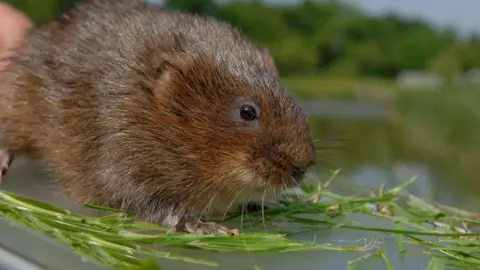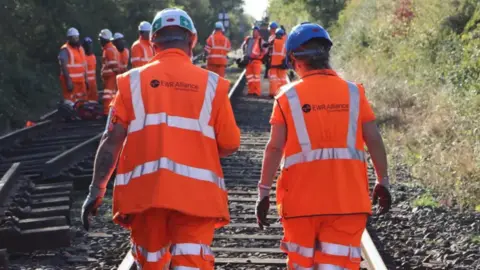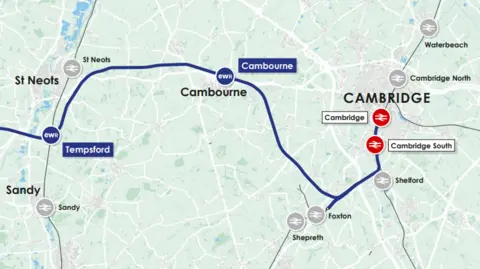Concerns for wildlife raised with East West Rail
 British Waterways
British WaterwaysA council has highlighted concerns about the impact of a multi billion pound railway project on wildlife and the local community.
Cambridgeshire County Council (CCC) is set to discuss its draft response to the East West Rail (EWR) consultation at a meeting on Tuesday.
The project to link Oxford and Cambridge by rail, with new infrastructure planned in the south Cambridgeshire countryside, is inviting responses until 24 January.
A spokesperson from EWR said it valued all feedback received and was committed to working with local communities.
"We will carefully review all consultation responses in detail as we move forward with this vital project," the spokesperson said.
 East West Rail
East West RailEWR is carrying out a 10-week public consultation and has been holding engagement events in local towns and villages ahead of holding a statutory consultation.
In its draft response, the council said it supported the strategic objectives of EWR, including improvements to public transport connectivity, new housing and employment, and plans for future growth.
'Catastrophic impacts'
But it highlighted concerns about the project's impact on wildlife in Cambridgeshire.
"The council is concerned that habitat loss and impacts associated with the EWR scheme will further exacerbate fragmentation and result in losses to wildlife sites, habitat and species," the report said.
The impact on barbastelle bats living in Wimpole and Eversden Woods could be "unacceptable" and result in "catastrophic impacts" on their population, it added, including "in the worst-case scenario, loss of the maternity roost".
It also highlighted an "unacceptable" impact on water voles using the Hobson's Park city wildlife site.
EWR said in a nature fact sheet that the project would provide a 10% biodiversity net gain and that it was carrying out surveys of different wildlife groups, such as bats, birds and protected species - including water voles.
The proposed rail route would pass near the villages of Highfields Caldecote, Comberton and Haslingfield, through Chapel Hill, and south of Harston on its way to a new station at Cambridge South.
 East West Rail
East West RailThe council has suggested that EWR should introduce a fund for communities affected by the disruption and the loss of land.
"The impact on mental health of residents has the potential to be considerable for those living close by," it added.
The authority also suggested EWR set up a community rail partnership so that affected people "can start to have a positive relationship with the finished project".
The EWR spokesperson said: "We remain committed to working hand-in-hand with the local communities that EWR will serve.
"Constructive and frequent dialogue with the council and other stakeholders is central to this process.
"We will carefully review all consultation responses in detail as we move forward with this vital project."
Follow Cambridgeshire news on BBC Sounds, Facebook, Instagram and X.